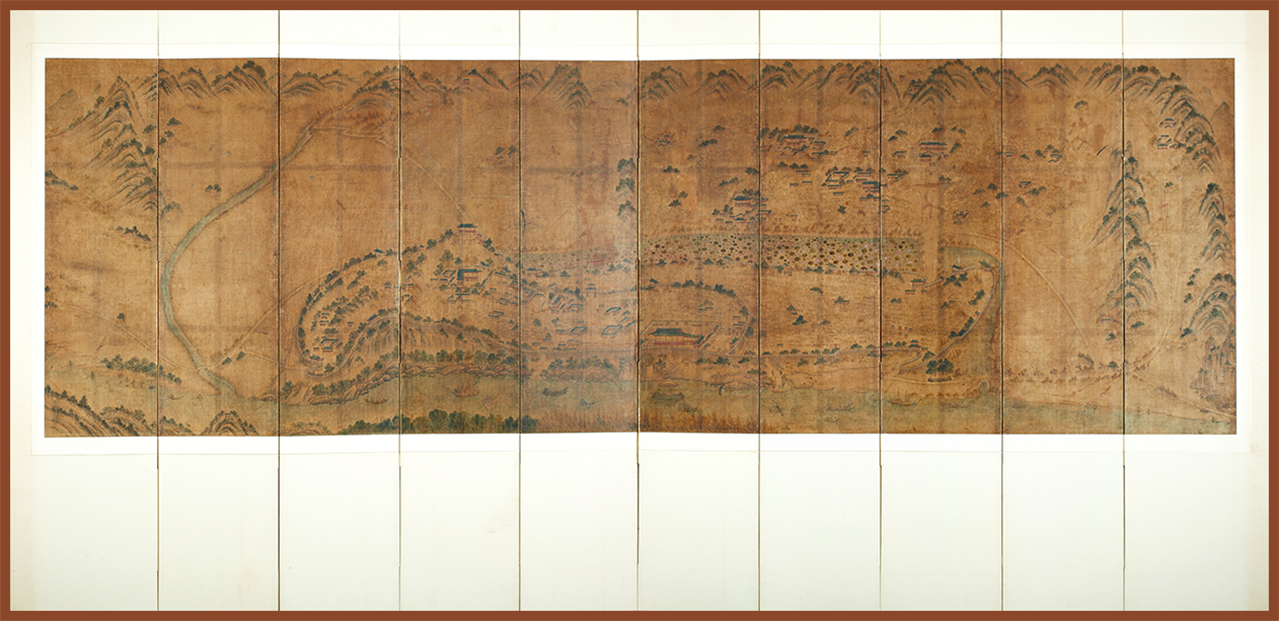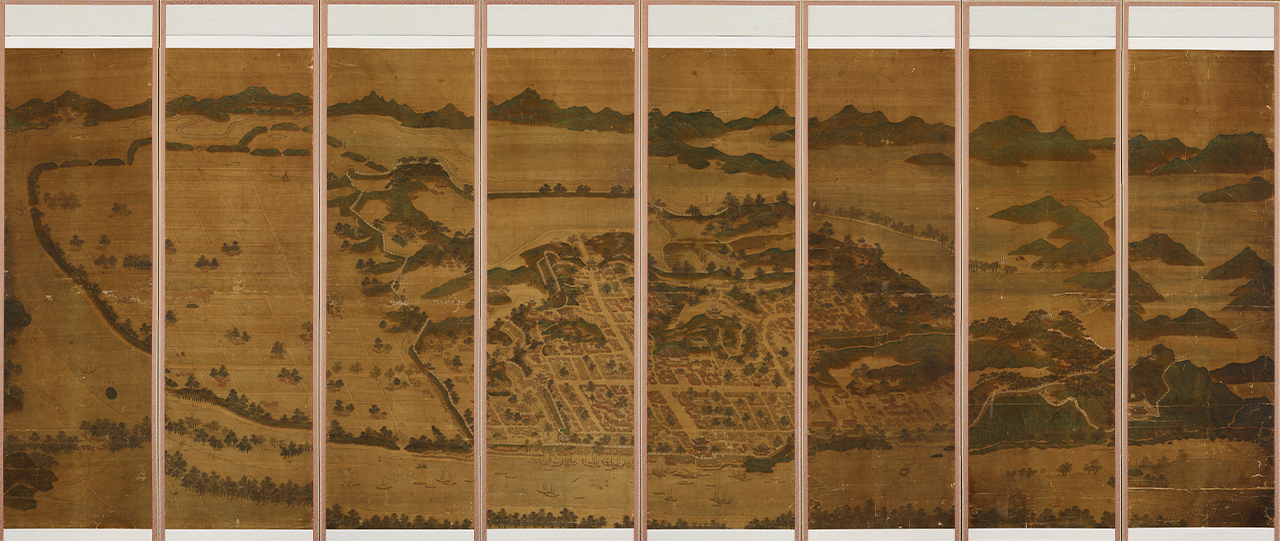Days of War and Conflict

The late Joseon Dynasty was a time of war. The Confucian ideal state dreamed up by the scholars was swaying like a lantern before the wind due to constant warfare. Eventually, the scholars drew their swords, and the common people abandoned their farming tools and took up weapons. To realize their ideals, they first had to defend and protect their villages and fortress. Meet our fortress that they defended during that time.
First up is Jinjuseong, a stone fortress built in the late Goryeo and early Joseon periods.
Famous for the legend of Nongae, Jinju Fortress was a military stronghold
and the site of a fierce battle against the Japanese during the Imjin War.
Jinju Fortress, especially with the Nam River flowing in front of the Fortress and the gorgeous scenery around it,
was often painted in the period around the 19th century.
Defending this beautiful Fortress was the first step in defending Honam,
defending the country, and eventually defending one's ideal home during the Imjin War,
so the Battle of Jinju Fortress was bound to be one of the fiercest battles during the Imjin War.
This 10panel folding screen painting at Songam is one of the 18 remaining pieces.
View description of
Painting of Jinju Fortress
View media art video
Painting of
Pyeongyang Fortress
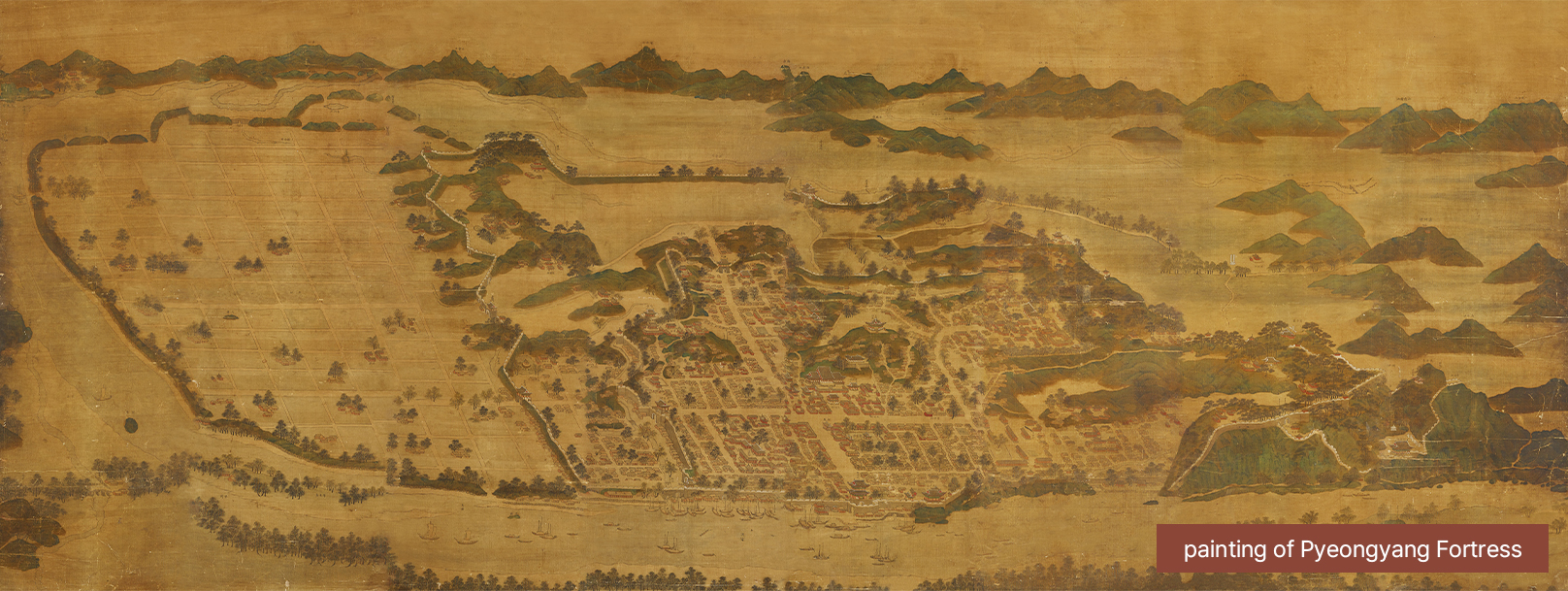
Pyongyang Fortress is a castle that has been with our history for so long that there is a theory that it has existed since the time of Gojoseon. During the Imjin War, the Fortress was captured by a large army of Japanese soldiers, but was later recaptured by the Joseon-Myeong alliance after a half-year siege.
The earliest map of Pyeongyang Fortress in the late Joseon Dynasty is located here at the Songam Art Museum. This painting brilliantly reproduces Pyongyang, the capital of history, the center of national defense and diplomacy, and a resource-rich country where trade and commerce flourished, with delicate strokes on a large eight-sided folding screen. In an era before photography, this delicate painting is a precious record that vividly meets the scenery of the city at the time.
View description of
Painting of Pyeongyang Fortress
View media art video
The Era of Folk Paintings
and Real Landscape Painting

In the late Joseon Dynasty, society underwent major changes.
Art also saw a change, with the rise of Jingyeong Sansu painting,
which factually expresses the nature of Korea, and the rise of folk and genre paintings.
Unlike previous paintings that depicted an idealized version of Korea,
Jingyeong Sansu paintings began to depict the actual landscape of Joseon,
and the folk paintings of the free-spirited common people began to actively express
their own wishes, unique colors, and refined aesthetics.
Chaekgado, which has been praised for its modern sophistication in museum exhibitions
not only in Korea but also abroad, is one of the representative folk paintings.
Chaekgado is a painting of book and scholar's utensils, and it depicts a variety of objects such as vases,
pencil cases, ceramics, glasses, fruits, and flowers, in addition to books, antiques, and stationery.
At the time, it was so popular that it was even used as a test subject for painters.
Painting of Pine Tree
and Mushrooms
A leading painter of the late Joseon Dynasty, gyeomjae Jeongseon was born in 1676 (the second year of king Sukjong)
as the youngest son of a fallen Yangban family, but he showed an incredible talent for painting.
At the age of thirty, he began traveling around the country painting scenic nature scenes.
His unique perspective and the beautiful mountain streams of Korea reproduced on canvas moved people and ushered in the era of Jingyeong Sansu painting.
He devoted his life to painting, and even as he grew older, he continued to paint.
The Painting of "Pine Tree and Mushrooms" in the Songam Museum of Art shows that he still hadn't put down his paintbrush at the age of 80.
The inscription in the lower right corner of the painting, "Drawn in the year of Eulhae, Gyeomjae 80 years old" tells us the year it was created.
A cypress tree stands majestically across the canvas, old pine tree needles spreading out in green, while a cloud-like reishi mushroom rises from beneath the tree.
The lonely yet resolute demeanor seems to reflect the feelings of the artist at the end of his life.
View media art video
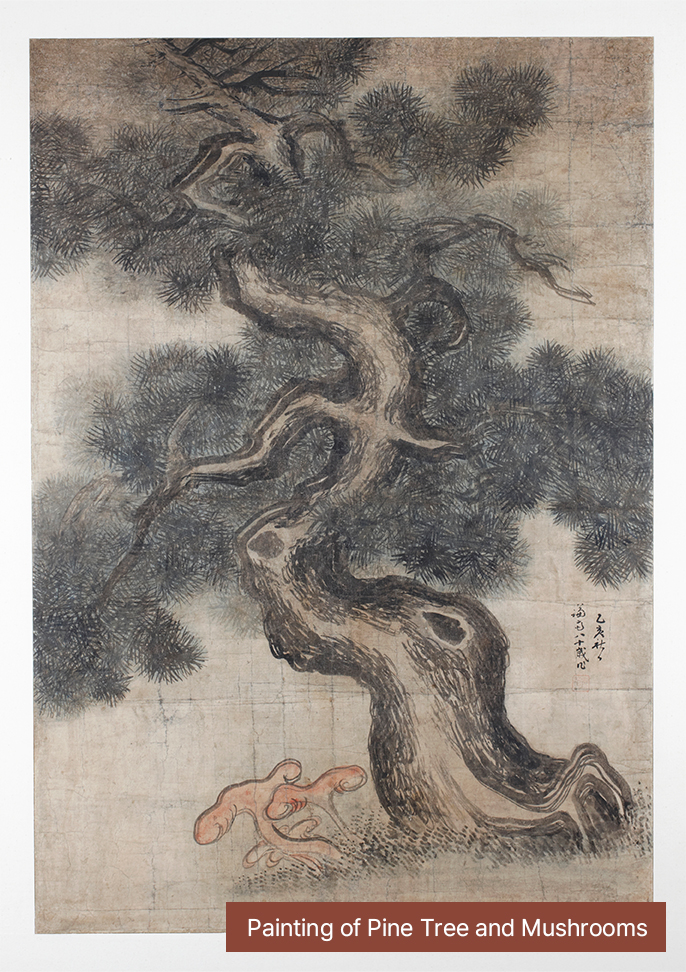
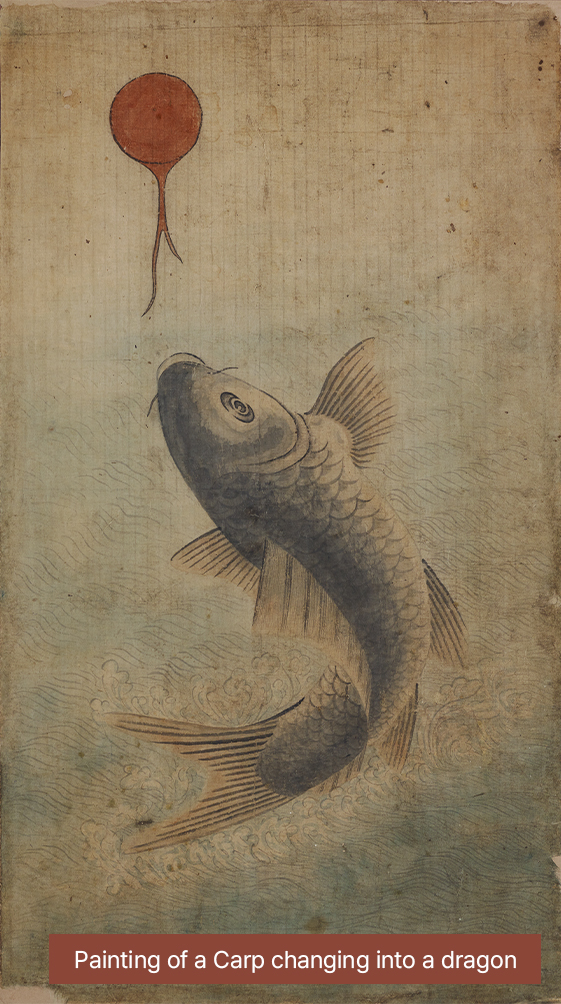
Painting of a Carp Changing
into a Dragon
The carp jumping over the waves is associated with the tale of the Dragon Gateway.
In the upper reaches of the Yellow River in China, there's a waterfall called the Dragon Gate, and in the spring,
carp are said to leap over it in droves, defying the turbulent waters.
Only one carp, the bravest and most divine of them all, is able to pass through the gate and transform into a dragon.
Because of this story, the Carp changing into a Dragon painting has become popular as a symbol of "rising to the top.”
This is because it symbolizes that just as a carp can become a dragon through hard work, so can a scholar who studies hard and passes the examination.
Songam Art Museum is a small art museum located on the edge of Munhak Mountain in Incheon, overlooking the West Sea.
The red brick art museum is located in a place where colorful flowers bloom through the garden in spring and white snowflakes bloom on pine trees in winter.
The founder of Songam Art Museum was originally from Gaeseong, but while doing business in Incheon, he collected artifacts while thinking of his hometown of Songdo.
When he donated the artifacts he collected throughout his life to Incheon City, the art museum was born, and it became Songam Art Museum because his arc is pine trees and rocks.
The Songam Art Museum has a collection of over 10,000 artifacts, and the representative artifacts are well organized by field,
so you can get a good idea of the flow and characteristics of Korean art.
Therefore, a day at Songam is a satisfying time to understand the flow of Korean ceramics, paintings and calligraphic works
at a glance, and there are always various special exhibitions and experiences waiting for visitors to understand the artifacts in a fun way.
A place where you can expect a short encounter but a long afterglow,
A place that is small but full of information, friendly and accessible,
is Songam Art Museum
Go to the outdoor exhibition video
송암미술관
Produce : zipshowkorea
